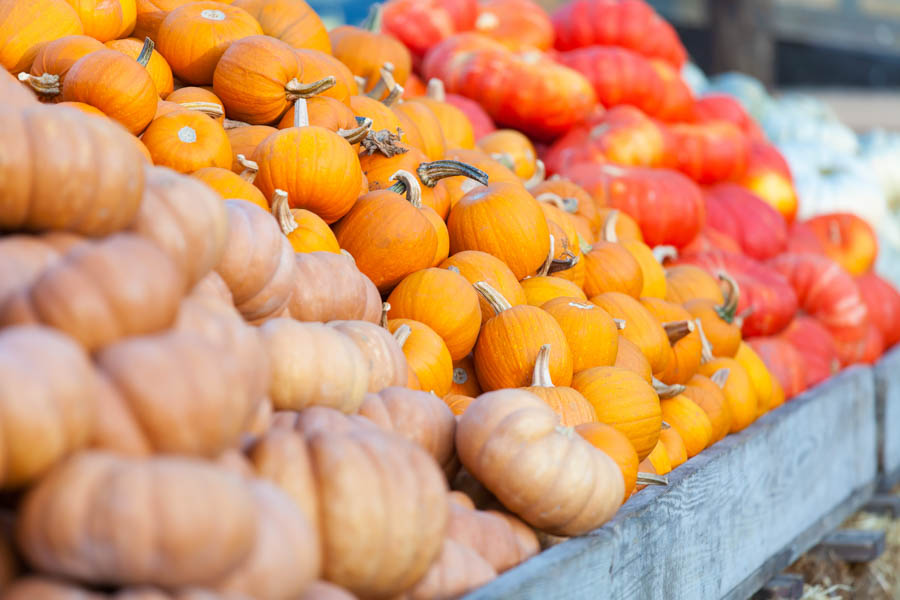Getting to Know Garden Pumpkins: A GardenZeus Guide to Types, Species, and Characteristics

GardenZeus earns commissions on sales made through links in this article. There is no additional cost to you.
What exactly is a pumpkin? Botanically speaking, that’s not a simple question. There is no such species as Cucurbita pumpkinitis. Is pumpkin a type of squash? Yes. Do all pumpkins belong in the category of winter squash? Consensus suggests yes. Many gardeners, garden writers, and seed vendors agree on this, but technically even this is debatable.
Getting to Know Pumpkins by Species:
The vast majority of pumpkins grown and sold in California and the United states are are grown as winter squash, from 3 main species in the Cucurbit family: Cucurbita pepo, Cucurbita maxima and Cucurbita moschata.
Cucurbita pepo pumpkin types include most of the round and taller-than-wide varieties grown for painting or carving into jack-o’-lanterns, as well as many smaller, mini, cooking/baking, and ornamental varieties. Pepo varieties are the earliest pumpkins to mature (often 85 to 110 days). Most summer-squash varieties including zucchini and some winter-squash varieties also belong to this species. Pepo pumpkin varieties may have a much longer storage life than commonly suggested if grown to full maturity, cured property, and stored under cool, dry, dark conditions. Some varieties are sweet or fine-textured and preferred for soups and pies.
Sugar Pie Pumpkin, a Cucurbita pepo type
Cucurbita maxima types include many large, wider-than-tall, ribbed varieties that store well as winter squash if cured properly. This species produces many unusual and novelty pumpkins in a wide range of colors from white to pink and blue among others, and also most varieties grown as giant pumpkins. Maxima also produces popular winter-squash varieties including banana, buttercup, hubbard, kabocha and many others. Most maxima pumpkin varieties need a long growing season, and are more prone to insect problems than pepo and moschata, especially during hot summers or stressful environmental conditions. Most maxima varieties, both large and small, are ideal as ornamentals or pumpkins for Halloween and fall decoration, then cooked and eaten as squash that are much more flavorful and versatile than most pumpkins grown or sold for decoration.
Three Cucurbita maxima types: top to bottom are Atlantic Giant, French Cinderella (Rouge Vif d’Etampes) and Jarrahdale.
The best-known Cucurbita moschata variety is undoubtedly butternut squash, but this species also includes popular pumpkin varieties. The moschata heirloom pumpkin variety, Musquee de Provence, produces large, beautiful, widely and deeply ribbed, flat pumpkins that can be carved but are ideal for soups, pies, and other cooking. Pumpkins from this exceptional variety are primarily orange but have shades of green, brown, and yellow. Musquee de Provence fruits are a dream of autumn and Thanksgiving captured in vegetable form. Moschata types also include cheese squashes that may be used as pumpkins. The name “cheese squash” was inspired by prominent ribbing in fruits such that they may resemble a wheel of cheese. Squash from this group are ideal for baking and making desserts, and are used commercially for pumpkin pie mixes. Moschata varieties need a long growing season, and are the most heat-tolerant of the 3 common winter-squash species; they generally perform better than pepo or maxima varieties in hot-summer California areas.
Cucurbita moschata types: from top to bottom Long Island Cheese and Musquee de Provence
Other articles that may be of interest include:
Timing For Growing Halloween Pumpkins in Hot-Summer California Areas
Growing Winter Squash and Pumpkins in the California Home Garden
Grow Cucurbits in a Mature Compost Pile
Saving Pumpkin Seeds: It’s Complicated





